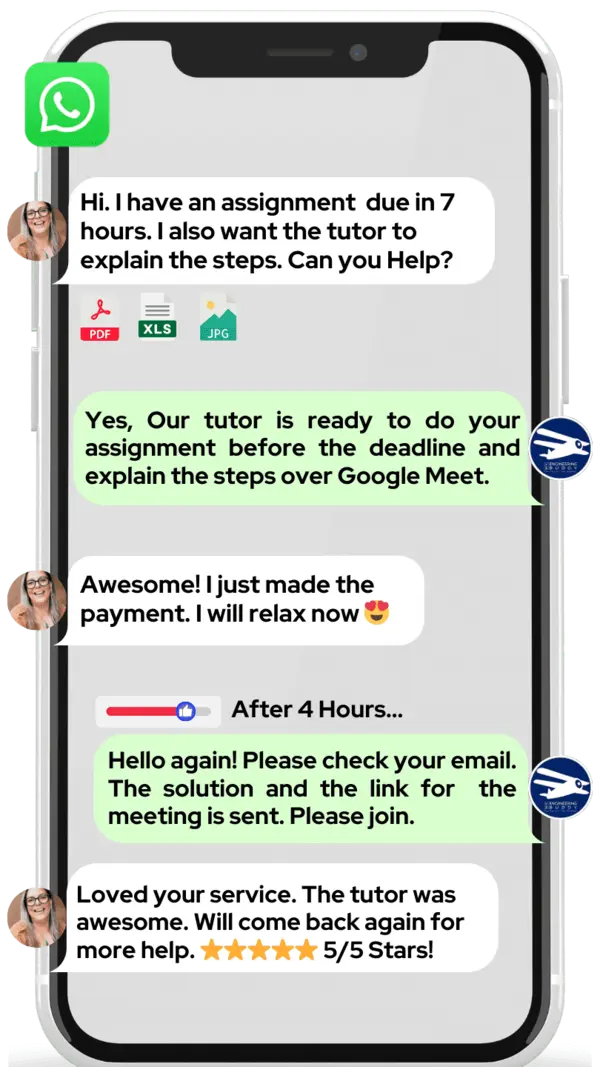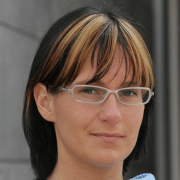

Hire The Best Turbulence modeling Tutor
Top Tutors, Top Grades. Without The Stress!
10,000+ Happy Students From Various Universities
Choose MEB. Choose Peace Of Mind!
How Much For Private 1:1 Tutoring & Hw Help?
Private 1:1 Tutors Cost $20 – 35 per hour* on average. HW Help cost depends mostly on the effort**.
Turbulence modeling Online Tutoring & Homework Help
What is Turbulence modeling?
Turbulence modeling is an approach in Computational Fluid Dynamics (CFD, which stands for Computational Fluid Dynamics) to approximate chaotic, eddy-filled flows without resolving every swirl. It uses equations like RANS (Reynolds-Averaged Navier-Stokes) to predict averages, crucial for wing design or car aerodynamics where full detail resolution is impossible.
Also called closure modeling, eddy-viscosity models, statistical turbulence models, or mixing-length theory; sometimes referred to as subgrid-scale modeling in large eddy simulation context. Engineers might pick a k–ε or k–ω model when simulating airflow over turbines in a jet engine, or study pollutant dispersion in an urban enviroment.
Key topics include the closure problem, Reynolds stress modeling, subgrid-scale models, direct numerical simulation (DNS), large eddy simulation (LES), hybrid RANS-LES techniques, wall functions, vortex dynamics, Kolmogorov energy cascade, numerical discretization, grid resolution studies, compressible vs incompressible turbulence, and heat/mass transfer coupling. NASA’s simulations of Space Shuttle launches rely on many of these subjects to predict surface pressures and heating.
In the 1880s Osborne Reynolds identified transition between laminar and turbulent flow via his famous pipe experiments. Ludwig Prandtl introduced mixing-length ideas in 1925. Andrey Kolmogorov laid statistical foundations in 1941, proposing the energy cascade. The 1960s saw RANS models become practical, while Joseph Smagorinsky’s 1963 work kickstarted large eddy simulation. Direct numerical simulations by Orszag and Patterson appeared in the early 1970s. In the 1990s hybrid methods bridged RANS and LES, and today commercial CFD codes embed decades of these breakthroughs.
How can MEB help you with Turbulence modeling?
Do you need help learning turbulence modeling? MEB offers personalized 1:1 online tutoring. A tutor works with you one-on-one to explain tough ideas.
If you are a school, college, or university student and want top grades in assignments, lab reports, tests, projects, essays, or big research papers, try our 24/7 online homework help for turbulence modeling.
We like using WhatsApp chat. If you do not use WhatsApp, email us at meb@myengineeringbuddy.com.
Our students are from the USA, Canada, the UK, the Gulf, Europe, and Australia.
Students ask for help because classes are hard, homework is too much, or ideas are confusing. Sometimes they have health or personal issues, work part‑time, or miss classes.
If you are a parent and your ward is struggling, contact us today. We can help them ace their exams and homework. They will thank you!
MEB also supports more than 1000 other subjects with expert tutors. Asking for help can make school less stressful and lead to success.
DISCLAIMER: OUR SERVICES AIM TO PROVIDE PERSONALIZED ACADEMIC GUIDANCE, HELPING STUDENTS UNDERSTAND CONCEPTS AND IMPROVE SKILLS. MATERIALS PROVIDED ARE FOR REFERENCE AND LEARNING PURPOSES ONLY. MISUSING THEM FOR ACADEMIC DISHONESTY OR VIOLATIONS OF INTEGRITY POLICIES IS STRONGLY DISCOURAGED. READ OUR HONOR CODE AND ACADEMIC INTEGRITY POLICY TO CURB DISHONEST BEHAVIOUR.
What is so special about Turbulence modeling?
Turbulence modeling stands out because it tries to describe the chaotic, swirling motion of fluids that we can’t predict with simple equations. In aerospace engineering, this subject helps us understand airflow over wings, rocket plumes, and jet engines. Its uniqueness lies in balancing theory, experiments, and computer simulations to capture fluid chaos that other subjects treat as noise or ignore entirely.
Compared to more straightforward courses, turbulence modeling offers a real‑world edge: it drives better aircraft designs, safer drones, and cleaner jet engines. On the flip side, it is mathematically tough, demands heavy computing power, and often lacks exact answers. Students must grapple with complex software and massive datasets, making it more challenging than many other engineering topics.
What are the career opportunities in Turbulence modeling?
Students can go on to earn a master’s or doctorate in aerospace engineering or fluid dynamics. Specialized courses in computational fluid dynamics and turbulence modeling are offered by top universities. Online certificates and summer programs at research centers also help build skills in advanced modeling methods.
Job roles include CFD engineer, simulation specialist, and research scientist. They use software like ANSYS Fluent or OpenFOAM to build and run models on high‑performance computers. They analyze flow data and refine designs for airfoils, engines, drones, wind turbines, or cars.
We learn turbulence modeling to understand how chaotic flows affect real‑world designs. Test preparation and hands‑on practice help students master theory, coding and software skills, and meet requirements for advanced degrees, research projects, or professional certification exams.
Turbulence modeling is used in aerospace, automotive, energy, and weather forecasting. It improves fuel efficiency, lowers noise, cuts costs, and boosts safety. Latest trends include machine learning and data‑driven methods to speed up simulations and increase prediction accuracy.
How to learn Turbulence modeling?
Start by laying a solid base: review fluid mechanics and math tools like calculus and differential equations. Step 1: read introductory chapters on Navier–Stokes equations. Step 2: learn Reynolds averaging and closure problem. Step 3: pick a simple model (like k–ε) and study its equations. Step 4: use tutorials in software (e.g. ANSYS or OpenFOAM) to run sample cases. Step 5: compare results with benchmark data. Step 6: repeat with more models and refine your notes.
Many find turbulence modeling challenging because it mixes complex math, physics and computer work. Don’t let that scare you—start small, focus on one model at a time, and build up. With regular practice and patience, you’ll get there.
You can self‑study if you’re disciplined, use online courses and textbooks, and practice in CFD tools. A tutor is helpful when you hit tricky parts, need personalized feedback, or want to speed up your progress by clearing doubts quickly.
Our MEB tutors offer 24/7 online one‑on‑one sessions to guide you through theory, software setup, and assignments. We customize lessons to your pace, provide worked examples, and help with homework or projects in turbulence modeling.
For a good working knowledge of basic turbulence models, expect to spend about 3–6 months studying part‑time. To master advanced topics and implement custom models, plan on 6–12 months of regular study and practice.
Check out the ANSYS Learning Hub channel, CFD NINJA tutorials, MIT OpenCourseWare lectures on turbulence modeling, YouTube: CFD Online webinars. Websites: cfd‑online.com, NASA CFD resources, eFunda. Books: “Turbulent Flows” by S.B. Pope, “Turbulence Modeling for CFD” by Wilcox, “An Introduction to Turbulence and Its Measurement” by Wyngaard, “Computational Methods for Fluid Dynamics” by Ferziger & Perić. Use PDF and library copies. Combine videos with hands‑on practice in software. See Stanford’s Dr. Pope lectures, Cambridge course notes, OpenFOAM tutorials for practice.
College students, parents, and tutors in the USA, Canada, UK, Gulf, etc., can get a helping hand with 24/7 online 1:1 tutoring or assignment help from our MEB tutors at an affordable fee.


















